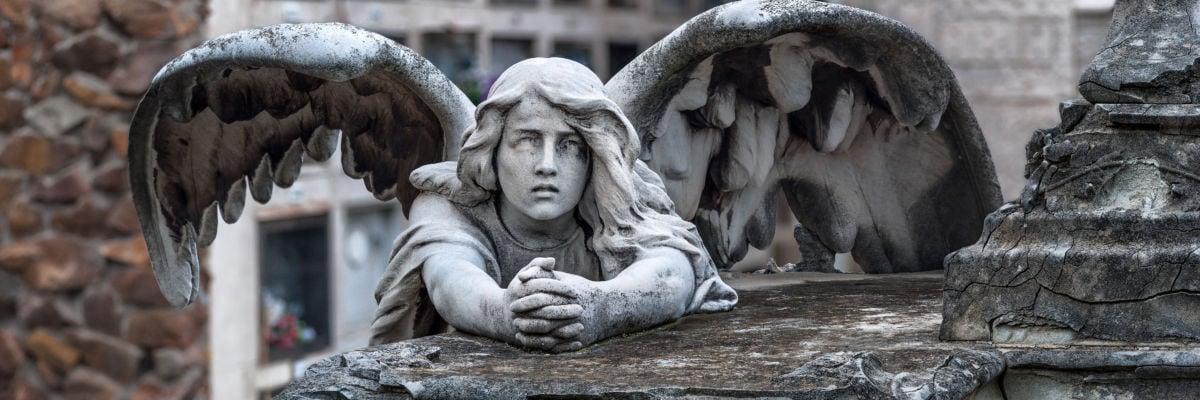
Protestants like Gavin Ortlund and John Carpenter argue that history contradicts what Catholics believe about images. Rather than addressing every historical source they cite, I will share four rules for how to handle this argument.
It is worth noting upfront that Catholics don’t view historical sources at the same level of scripture except wherever the contents of those sources pass along Sacred Tradition. Otherwise, we may scrutinize the authority of each source.
Hence,
Rule #1: If the source is giving its own opinion, then we may judge that opinion.
Protestants will often cite historical sources that use Platonic reasoning against images. A number of these sources use this reasoning to justify their iconoclast interpretation of Exodus 20:4. Of course, Exodus’s prohibition against graven idols was not grounded in Platonism, or else the Solomonic Temple would be philosophically ruled out in principle. We should therefore take these arguments with a grain of salt: God probably doesn’t agree with Platonic critiques of art.
The Christian apologist Lactantius says, for example, “That which is true is to be preferred to all things which are false [in context, depictions of the invisible God]; earthly things are to be trampled upon, that we may obtain heavenly things” (Divine Institutes 2, 19). This is a classic case of the Platonic accusation that art is bad because it deceptively imitates reality. Since even Protestants like Ortlund think Christian art can have good purposes, I don’t see why Catholics are bound to Plato here.
Rule #2: If a source insists that the true God is invisible without addressing the fact that Jesus is the true God and visible, then we should limit how seriously we take the source.
Ortlund writes, “Early apologists like Justin Martyr and Athenagoras, for example, ridiculed the pagan practice of making images to be invoked and revered,” whereas “the true God, they insisted, was invisible and distinct from matter altogether as the Creator and Sustainer of all things” (196).
But isn’t Jesus the true God and visible? Although these invisible-God-arguments might have once scored points against pagans, they come back to bite us now. These types of arguments should be left behind as outdated or severely nuanced with Christology. Moreover, I don’t see how we can infer from the fact that we can’t depict God in his invisible divine nature (duh!) to the conclusion that we can’t depict saints or even Jesus in his human nature. At worst, only one kind of image is impermissible.
Rule #3: We cannot assume that what a source says against pagan gods and their images applies to the saints and their images.
Consider St. Augustine’s homily on Psalm 115, where he condemns idols and responds to the pagan objection that Christians also worship their sacred art: “But have they mouth, and yet speak not? Have they eyes, and see not? [Psalm 115:5] Do we pray unto them, because through them we pray unto God?”
In context, Augustine is saying there’s no parallel: Christians don’t treat their images as God, unlike how the pagans treat the images of their gods. The concern here is about images of the deity.
We cannot read in Protestant assumptions or extrapolate that Augustine would throw saints and their images under the bus, especially when Augustine elsewhere stresses that the cult of saints is different from the cult of pagan gods (Contra Faustum 20, 21). This is a Protestant overreach that should be called out. It would be safer to conclude that we simply don’t know what Augustine would have thought about the veneration of a saint’s image from this one passage, given its special context.
Rule #4: Know about favorable evidence for images!
Rather than being on the defense, Catholics should be ready on the offense. There are texts like St. John Chrysotom (fourth century)’s On Saint Meletius and Theodoret of Cyrus (fifth century)’s A History of the Monks of Syria that speak approvingly of devotion to a saint’s image. Theodoret, for example, says that St. Simeon the Stylite “became so celebrated in Great Rome that at the entrances of all the workshops they have erected small images of him, as a means to secure protection and safety for themselves.” Eusebius of Caesarea (fourth century), whose stance on images shifted, notes in his Church History that in his day there were “images of his [Christ’s] apostles Paul and Peter and indeed of Christ himself preserved through colored paints in paintings” (7, 18).
These four rules will help you find the gaps in the armor of this objection. Protestant apologists are overselling their case big time.



